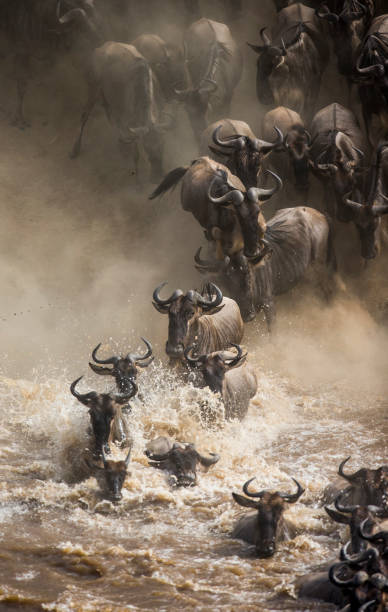The Great Migration: Witnessing Nature's Greatest Show
Every year, the Serengeti plains become the stage for one of nature's most spectacular performances - the Great Migration. This annual journey of over 2 million wildebeest, zebras, and gazelles is a testament to the resilience and determination of wildlife in the face of changing seasons.
The Migration Cycle: A Year-Round Journey
The Great Migration follows a circular route through Tanzania and Kenya, covering approximately 1,800 kilometers annually. This incredible journey is driven by the search for fresh grazing and water, creating a natural rhythm that has existed for thousands of years.

Millions of wildebeest create dust clouds as they traverse the Serengeti plains
January - March: Calving Season in the Southern Serengeti
During these months, the southern Serengeti becomes a nursery for thousands of newborn wildebeest. The short grass plains provide essential nutrients for nursing mothers, and the abundance of food ensures healthy development for the calves. This is also the time when predators are most active, creating dramatic scenes of survival.
April - May: The Long Trek Begins
As the rains end and the grass begins to dry, the herds start their northward journey. This period is characterized by the formation of massive columns of animals, sometimes stretching for kilometers. The sight of thousands of animals moving in unison is truly awe-inspiring.
June - July: The Grumeti River Crossing
One of the migration's most dramatic moments occurs at the Grumeti River. Here, the herds must cross crocodile-infested waters, creating scenes of both triumph and tragedy. The river crossings are often the highlight of any migration safari, offering photographers and wildlife enthusiasts unforgettable moments.
August - September: The Mara River Challenge
The Mara River crossing is perhaps the most famous and dangerous part of the migration. The river is deeper and faster than the Grumeti, and the banks are steeper. Watching thousands of animals plunge into the water, some never to emerge, is a humbling experience that reminds us of nature's raw power.
October - December: The Return Journey
As the rains return to the southern Serengeti, the herds begin their journey back south. This period offers excellent game viewing opportunities as the animals are more spread out, making it easier to observe individual behaviors and interactions.
Planning Your Migration Safari
To witness the Great Migration, timing is everything. The best viewing periods depend on which aspect of the migration you want to experience:
Best Times to Visit
- Calving Season: January - March (Southern Serengeti)
- River Crossings: June - September (Western and Northern Serengeti)
- Return Journey: October - December (Central and Southern Serengeti)
Choosing Your Safari Experience
Nature Warriors African Safaris offers several migration-focused safari packages:
- Classic Migration Safari: 7-day journey following the migration route
- Migration Photography Safari: Specialized tours for wildlife photographers
- Luxury Migration Safari: Premium accommodations with exclusive viewing areas
- Migration & Culture Safari: Combine wildlife viewing with Maasai cultural experiences
Photography Tips for the Migration
Capturing the Great Migration requires patience, preparation, and the right equipment. Here are some essential tips:
Equipment
Bring a telephoto lens (300mm minimum) and a wide-angle lens for landscape shots. A tripod or monopod is essential for stability.
Timing
Early morning and late afternoon light provides the best conditions for photography. The golden hour creates dramatic shadows and warm tones.
Composition
Look for patterns in the herds, dramatic skies, and interesting foreground elements to create compelling compositions.
Conservation and the Future
The Great Migration faces numerous challenges, including climate change, habitat fragmentation, and human-wildlife conflict. Conservation efforts are crucial to ensure this natural wonder continues for future generations.
Nature Warriors African Safaris is committed to responsible tourism practices that support conservation efforts and benefit local communities. By choosing our safaris, you contribute to the protection of this incredible ecosystem.
Ready to witness one of nature's greatest spectacles? Contact our team to plan your Great Migration safari adventure.
